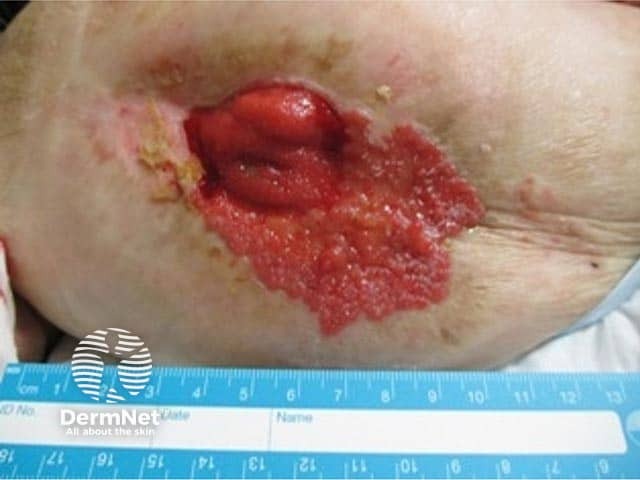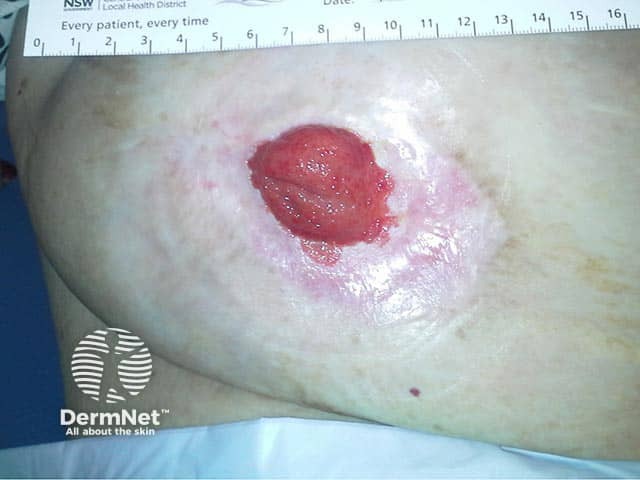Main menu
Common skin conditions

NEWS
Join DermNet PRO
Read more
Quick links
Author(s): Dr Vera Miao, Northern Sydney Local Health District, Australia; Professor Saxon D Smith, Dermatologist, Sydney Adventist Hospital Clinical School, Australia (2023).
Reviewing dermatologist: Dr Ian Coulson
Edited by the DermNet content department
Introduction Demographics Causes Clinical features Variation in skin types Complications Diagnosis Differential diagnoses Treatment Prevention Outcome
Peristomal intestinal metaplasia (PIM) is a rare but serious complication affecting the skin around a gastrointestinal stoma site.
It is characterised by the histological appearance of scattered intestinal mucosa and goblet cells within the variably intact epidermis around the stoma site.

Well-defined granular eruption emanating from ileostomy site (PIM-patient1)

Re-epithelialised granular eruption which was emanating from ileostomy site (PIM-patient1)

Well-defined granular eruption emanating from ileostomy site
PIM is rarely reported and may occur in those with an ileostomy or a colostomy.
Risk factors include:
The exact pathogenesis is not yet understood.
Suggested causative factors include:
PIM may present with the following clinical features:
Limited case reports in the literature make it difficult to compare presentations between different ethnicities. However, to date, there have been similar presentations across different Fitzpatrick skin types.
The diagnosis of PIM is confirmed by skin biopsy, typically shave biopsy, of the epithelium at the peripheral border of the plaque/lesion. The characteristic histological appearance of PIM is that of intestinal mucosa infiltrating the epidermis around the stoma site.
Electrocoagulation therapy has produced promising results in most case reports to date. Unfortunately, the rate of transformation to adenocarcinoma is not known.